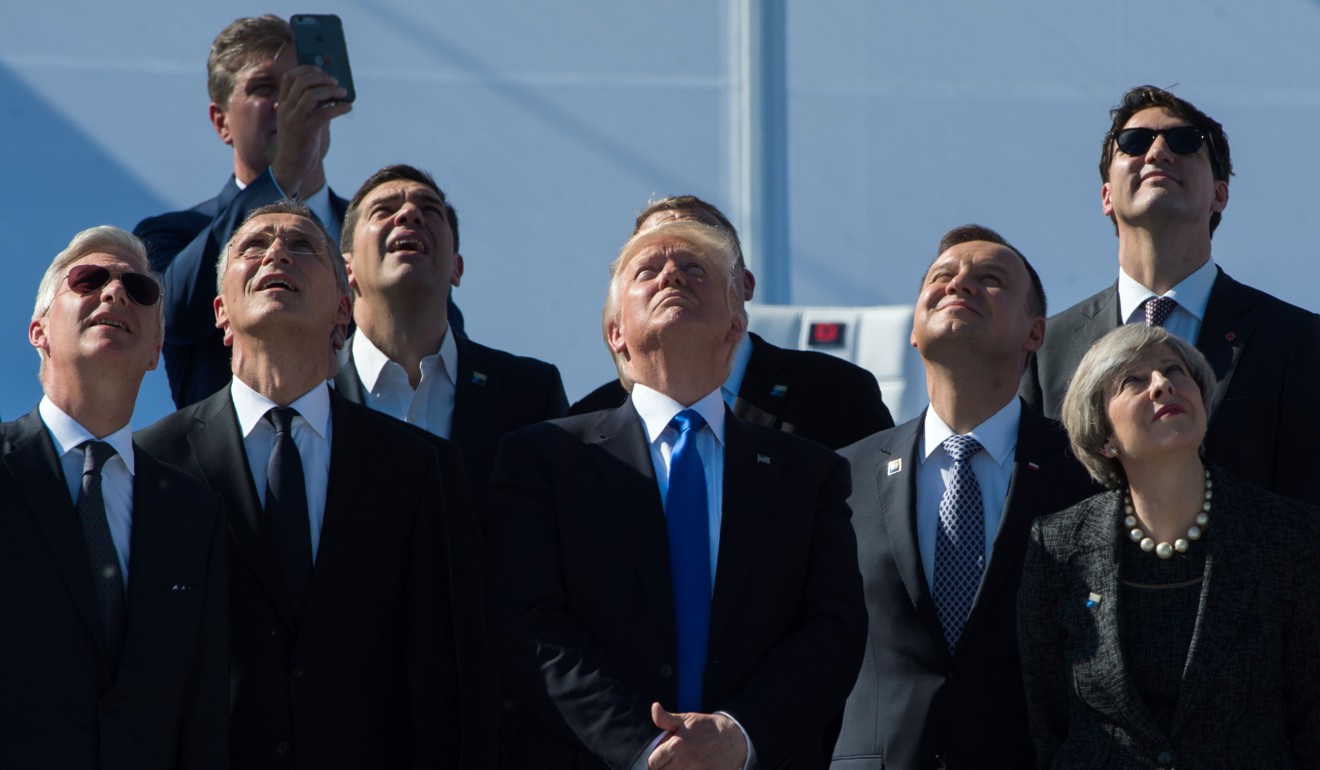
Unlike Nato, the SCO needs no enemy to justify its existence
Zhou Bo says a comparison of the two groupings, both of which welcomed new members this month, shows up the limits of the transatlantic military alliance
Nato is expanding faster. When Montenegro joined the alliance on June 5, it was only eight years ago when Albania and Croatia became member states. By comparison, India and Pakistan’s entry into the SCO is just the first such enlargement since the organisation was founded in 2001. But the SCO wins for size: it now has a quarter of the world’s population and covers three-fifths of the Eurasian continent.
Nato has an intrinsic problem. As a military alliance, it needs enemies to justify its survival. What united the alliance during the cold war was the Warsaw Pact led by the Soviet Union; now it is Russia and, most recently, Russia and Islamic State. At the Nato summit, UK Prime Minister Theresa May placed Russia in the same category of threat to the West as IS.

Trump castigates Nato allies for weak defence spending
How much further Nato can go remains to be seen. Nato lives on the fear of the central and eastern European countries of Russia, but it has tried its best to eschew a direct Nato-Russia confrontation, in spite of its protest of Russia’s annexation of Crimea and military intervention in Ukraine. Its acceptance of Montenegro, a small country with fewer than 2,000 troops, looks more like picking a low-hanging fruit.
The SCO, by contrast, is not designed to address an external threat, so it is not directed at the West. It looks inwards to address its own problems. Its predecessor, the “Shanghai Five”, succeeded in resolving border disputes among China, Kazakhstan, Kyrgyzstan, Russia and Tajikistan. Today, its security concern remains uprooting the “three evils” of terrorism, separatism and religious extremism. No one is sure when this can be achieved, but sincere efforts are being made. In 2004, an SCO counterterrorism centre was established in Tashkent, Uzbekistan. Since 2002, all military exercises within the SCO have been on counterterrorism.
As Xi and Modi put differences aside at SCO summit, will India-Pakistan ties follow suit?
Another distinctive feature of the SCO is that it is inclusive rather than exclusive. It is home to different values, religions and civilisations which, to a great extent, reflects the reality of the world today. Its missions are diverse, too. Apart from its primary focus on security, the SCO conducts exchanges in politics, economy, culture and society.
This contrasts with Nato’s “common values”. But do Nato members really share common values? France and Germany opposed an invasion of Iraq. The British Parliament vetoed any move to bomb Syria. Turkey, in recent years, has behaved more like a spur irritating Nato. More than once, Prime Minister Recep Tayyip Erdogan has threatened to give up its EU application in exchange for an SCO membership.
The SCO is audacious. It accepted Turkey, a Nato member, as a dialogue partner.

China, Pakistan and the challenges of Silk Road connectivity
The SCO is also credible for having no fear of trouble: it accepted both India and Pakistan as members, two countries at loggerheads. India, who enjoys robust economic growth, will add tremendously to the SCO’s weight. As for Pakistan, a stronger China now looks like a godsend. The construction of the China-Pakistan Economic Corridor is in full swing. The huge investment from China might prove to be the real game changer.
So far, only five Nato members spend 2 per cent of their gross domestic product on defence, as required. Perhaps this speaks to what the majority of Nato members really think about the “threats” facing them – they are manageable and shouldn’t loom large to the extent that they become more important than public spending on, say, education and public health.
Zhou Bo is an honorary fellow with the Centre of China-American Defence Relations at the Academy of Military Science

